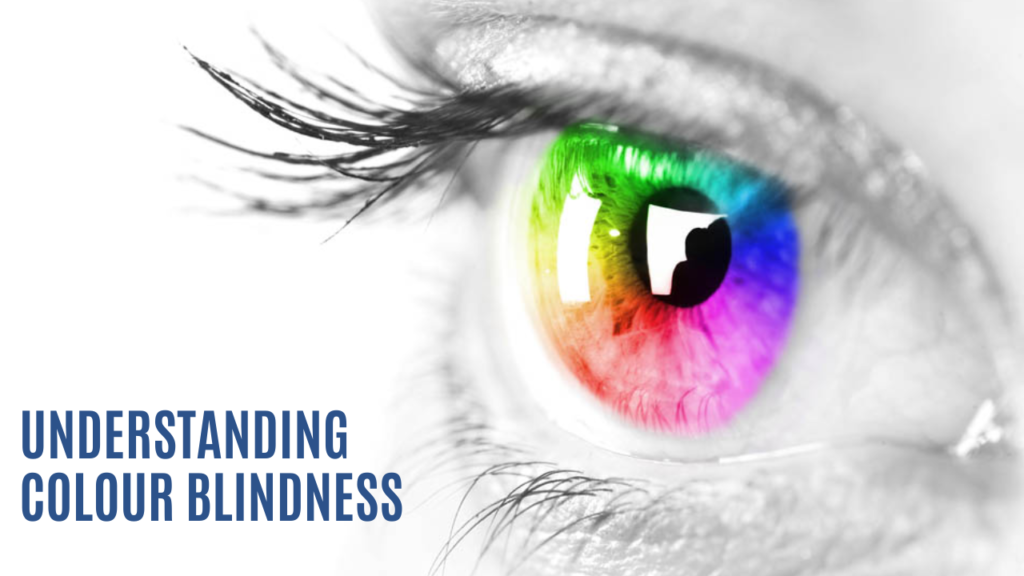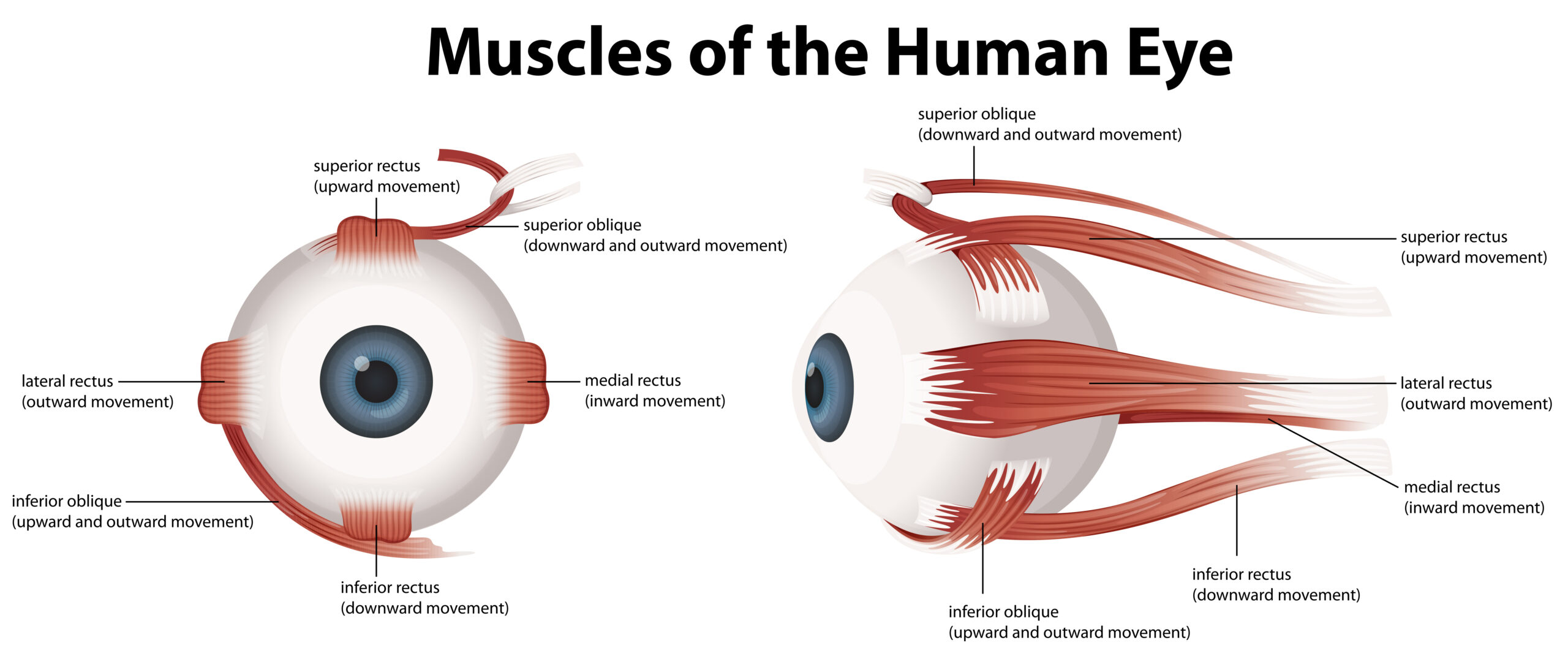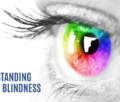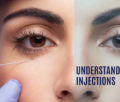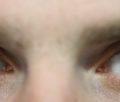Table of Contents
Colour blindness is a condition that affects millions of people worldwide, and in this blog, we’ll explore its causes, types, and management options.
What is Colour Blindness?
Colour blindness, also known as colour vision deficiency, is a visual impairment that affects an individual’s ability to perceive certain colours accurately. Contrary to what the name suggests, it doesn’t mean seeing the world in black and white. Instead, it involves difficulty distinguishing between specific colours or perceiving them differently than those with normal colour vision.
Types of Colour Blindness
There are three primary types of colour blindness:
1. Red-Green Colour Blindness (Protanopia):
Protanopia is a form of red-green colour blindness, which means individuals with this condition have difficulty distinguishing between red and green hues. This condition is more prevalent in men, as the genes responsible for red and green photopigments are located on the X chromosome.
Causes and Genetics:
Protanopia is primarily a genetic condition caused by mutations in the OPN1LW and OPN1MW genes, which code for the photopigments responsible for detecting red and green colours. Mutations in these genes result in the absence or malfunction of either the L-cones (responsible for detecting long wavelengths, including red) or M-cones (responsible for detecting medium wavelengths, including green) in the eye. As a result, individuals with protanopia have a reduced sensitivity to red light and may perceive red and green colours as shades of grey or brown.
Symptoms:
- Difficulty distinguishing between red and green objects or between red and green text or graphics.
- Challenges in recognizing ripe fruits, such as red apples or green grapes.
- Potential confusion when interpreting traffic signals, as the red light may appear dimmer or less distinct.
- Problems with colour-coded information, such as maps, charts, or graphs.
Diagnosis:
Ophthalmologists diagnose protanopia using colour vision tests, such as the Ishihara plates, which consist of patterns of coloured dots that individuals with normal colour vision can read but those with protanopia cannot decipher accurately.
2. Red-Green Colour Blindness (Deuteranopia):
Deuteranopia is another form of red-green colour blindness, similar to protanopia, but with subtle differences in how individuals perceive red and green colours.
Causes and Genetics:
Deuteranopia is also primarily a genetic condition, caused by mutations in the OPN1MW gene. These mutations result in the absence or malfunction of M-cones, responsible for detecting medium wavelengths, including green. Therefore, individuals with deuteranopia have difficulty distinguishing between red and green hues, often seeing them as shades of yellow and beige.
Symptoms:
- Difficulty distinguishing between red and green objects, similar to protanopia.
- Seeing red and green colours as shades of yellow and beige.
- Challenges with colour-coded information and interpreting maps or charts.
Diagnosis:
Diagnosing deuteranopia involves the same colour vision tests as protanopia, such as the Ishihara plates, which reveal the inability to accurately identify specific colours.
3. Blue-Yellow Colour Blindness (Tritanopia):
Tritanopia, also known as blue-yellow colour blindness, is a rarer form of colour vision deficiency. Individuals with this condition have difficulty distinguishing between blue and green, as well as between yellow and red. Unlike red-green colour blindness, which is more common in men, tritanopia occurs equally in both sexes.
Causes and Genetics:
Tritanopia is caused by mutations in the OPN1SW gene, which codes for the photopigment responsible for detecting short wavelengths, including blue. Mutations in this gene result in the absence or malfunction of S-cones, which detect short wavelengths. This deficiency leads to difficulties in perceiving blue and yellow colours accurately.
Symptoms:
- Difficulty distinguishing between blue and green hues, making these colours appear similar or indistinguishable.
- Challenges in telling apart yellow and red colours.
- Potential confusion with colour-coded information that relies on these colours.
- Difficulty recognizing certain traffic signals, as blue and green lights may be hard to differentiate.
Diagnosis:
Tritanopia can be diagnosed through colour vision tests designed to identify difficulties with blue and yellow perception.
Understanding the different types of colour blindness, such as protanopia, deuteranopia, and tritanopia, is crucial for both individuals living with these conditions and healthcare professionals like ophthalmologists. It helps in providing appropriate support and guidance for adapting to a world designed for individuals with normal colour vision.
Causes and Genetics
Colour blindness is often inherited and linked to the X chromosome. Men are more likely to be colour blind than women because they have only one X chromosome, while women have two. If a man inherits a colour blindness gene, he will be colour blind. Women can be carriers of the gene but are less likely to exhibit symptoms.
Certain gene mutations lead to the absence or malfunction of photopigments in the eye’s cone cells, which are responsible for detecting different colours. These mutations result in the various types of colour blindness.
Symptoms and Diagnosis
Common symptoms of colour blindness include difficulty distinguishing between certain colours, confusion with colour-coded information, and challenges in tasks like reading maps or identifying ripe fruits. If you or someone you know experiences these symptoms, it is essential to consult an eye health professional.
Ophthalmologists use specialised colour vision tests, such as Ishihara plates and Farnsworth-Munsell tests, to diagnose colour blindness. Early detection can help individuals adapt and seek support.
Living with Colour Blindness
Living with colour blindness can present unique challenges. Everyday tasks like selecting clothes, cooking, or reading traffic signals can be more complicated. Those with colour blindness often develop creative strategies to cope, such as memorising traffic light positions or asking for assistance in colour-dependent activities.
In some professions, like aviation and electrical work, colour vision is crucial. Colour-blind individuals may need to explore alternative career options or request reasonable accommodations.
Treatment and Management
While there is no “cure” for colour blindness, some aids and tools can assist individuals. Colour-correcting glasses, for example, can enhance colour perception by altering the way colours are seen. Smartphone apps can also help identify colours using the device’s camera.
Conclusion
In conclusion, colour blindness is a complex condition with different types and causes. While it can present challenges in daily life, individuals with colour blindness can adapt and thrive with the right support and tools. As an ophthalmologist, I encourage everyone to prioritise regular eye check-ups and seek help if you suspect colour vision deficiency.
Author Bio
Dr. Parth Shah is an experienced ophthalmologist in Canberra, Australia. With a commitment to promoting eye health, Dr. Shah aims to spread awareness about the importance of colour blindness. He believes that a proactive approach to eye care can make a significant difference in an individual’s life. Your vision matters, and he is here to help you see the world more clearly.

